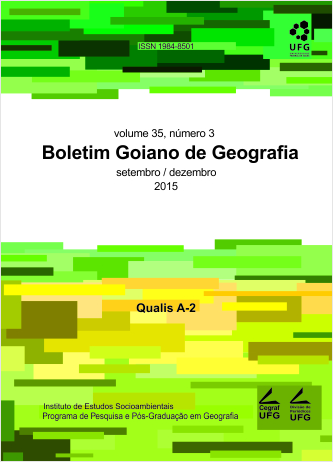THE OCCUPATION IN THE SURROUNDINGS OF INDIGENOUS LANDS IN RONDÔNIA-BRAZIL - DOI 10.5216/bgg.v35i3.38834
DOI:
https://doi.org/10.5216/bgg.v35i3.38834Abstract
The not indigenous occupation of the Amazon, especially in the Brazilian state of Rondônia, has led to the suppression of indigenous lands. Thus, part of these territories are the current demarcated Indigenous reserves, are often under pressure from the economic activities that surround them. In this context, the purpose of this study is to map and analyze the occupation of the areas surrounding indigenous lands in the state of Rondônia. In order to achieve the objectives, indirect spatial analysis methods, especially using satellite images and map algebra, were applied. The results reveal that the area surrounding all the indigenous lands in the state amounts to 5.504.717, 63 hectares, considering that 1.438.577, 46 hectares are employed for multiple uses, especially extensive cattle raising activities. Among the 20 indigenous reserves in Rondônia, the Rio Omerê Indigenous Reserve has the greatest amount of surrounding area that has been developed at 65.36%, followed by the Ribeirão and Lage reservations, at 52.56% and 50, 34%, respectively. On the other hand, the area surrounding the Rio Negro Ocaia reservation is the most intact, with only 0.31% of the area having been cleared. In addition, approximately 70% of the total area of around met anthropic pressure index (API) Low, while 3.54% had API High.Keywords: Occupation of Amazon, Rondônia State, Indigenous Reserve.
Downloads
Published
How to Cite
Issue
Section
License
Authors will not receive any payment for publishing their work in Boletim Goiano de Geografia. Therefore, they must grant all rights to the journal. However, they are entirely and exclusively responsible for the published contents, and editors are free to make corrections or adjustments to texts in conformity with publication guidelines.







